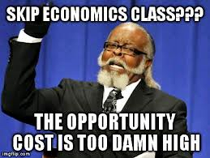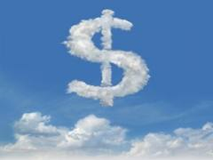|
Professor Anvari Taught manufacturing and industrial systems engineering courses at the University of Michigan for five years where he received his three engineering degrees, and as an adjunct professor he teaches project and cost management at local universities in the Washington DC area.� In his early career he worked at General Motors as a production engineer and later as an operations research and systems analyst at the cost and economic analysis center in Washington DC. Mort is currently the Director of Programs and Strategy at ASA (FM&C) and the Lean Six Sigma (LSS) deployment Director where he oversees process improvement initiatives, economic studies validation, cost benefit analysis, and risk and uncertainty analysis in support of major defense programs. Mort is Defense Acquisition University Level III Certified in Business Financial Management (BFM), and Business Cost Estimating (BCE). Mort has� received several professional awards that includes the 2006 DoD modeling and simulation award. In his public lectures, Mort stimulates cost culture debates among government and industry leaders and managers. Professor Anvari has repeatedly appeared on live television programs analyzing the political economy of the Middle East. |

















|
Mort Anvari |

|
Professor Anvari Taught manufacturing and industrial systems engineering courses at the University of Michigan for five years where he received his three engineering degrees, and as an adjunct professor he teaches project and cost management at local universities in the Washington DC area.� In his early career he worked at General Motors as a production engineer and later as an operations research and systems analyst at the cost and economic analysis center in Washington DC. Mort is currently the Director of Programs and Strategy at ASA (FM&C) and the Lean Six Sigma (LSS) deployment Director where he oversees process improvement initiatives, economic studies validation, cost benefit analysis, and risk and uncertainty analysis in support of major defense programs. Mort is Defense Acquisition University Level III Certified in Business Financial Management (BFM), and Business Cost Estimating (BCE). Mort has� received several professional awards that includes the 2006 DoD modeling and simulation award. In his public lectures, Mort stimulates cost culture debates among government and industry leaders and managers. Professor Anvari has repeatedly appeared on live television programs analyzing the political economy of the Middle East. |


|
|
Economics Topics� (scroll down for Topics contents) |
|
|
|
1 |
Global Economy |
|
|
|
2 |
MacroEconomics (Principles, Applications, and Tools) |
|
|
|
3 |
PRINCIPLES OF MACROECONOMICS |
|
|
|
4 |
MicroEconomics (Theory and Applications with Calculus) |
|
|
|
5 |
Engineering Economy |
|
|
|
6 |
Managerial Economics (Tools for Decision Makers) |
|
|
|
7 |
Exercise pdf |
|
|
|
8 |
Take a Test Excel |
|
|
|
9 |
Economics of Sports |
|
|
|
|
|
|
|
|
1 |
Global Economy |
|
|
|
1 |
|
|
|
|
2 |
|
|
|
|
3 |
|
|
|
|
4 |
|
|
|
|
5 |
|
|
|
|
6 |
|
|
|
|
7 |
|
|
|
|
8 |
|
|
|
|
9 |
|
|
|
|
10 |
|
|
|
|
11 |
|
|
|
|
12 |
|
|
|
|
13 |
|
|
|
|
14 |
|
|
|
|
15 |
|
|
|
|
16 |
|
|
|
|
17 |
|
|
|
|
18 |
|
|
|
|
19 |
|
|
|
|
20 |
|
|
|
|
2 |
MacroEconomics (Principles, Applications, and Tools) |
|
|
|
1 |
|
|
|
|
2 |
|
|
|
|
3 |
|
|
|
|
4 |
|
|
|
|
5 |
|
|
|
|
6 |
|
|
|
|
7 |
|
|
|
|
8 |
|
|
|
|
9 |
|
|
|
|
10 |
3 |
PRINCIPLES OF MACROECONOMICS |
|
|
11 |
1 |
||
|
12 |
2 |
||
|
13 |
3 |
||
|
14 |
4 |
||
|
15 |
5 |
||
|
16 |
6 |
||
|
17 |
7 |
||
|
18 |
8 |
||
|
19 |
9 |
||
|
5 |
Engineering Economy |
10 |
|
|
1 |
11 |
||
|
2 |
12 |
||
|
3 |
13 |
||
|
4 |
14 |
||
|
5 |
15 |
||
|
6 |
16 |
Household and Firm Behavior in the Macroeconomics: A Further Look |
|
|
7 |
17 |
||
|
8 |
18 |
||
|
9 |
19 |
International Trade, Comparative Advantage, and Protectionism |
|
|
10 |
20 |
Open-Economy Macroeconomics: The Balance of Payments and Exchange Rates |
|
|
11 |
21 |
||
|
12 |
4 |
MicroEconomics (Theory and Applications with Calculus) |
|
|
13 |
1 |
||
|
14 |
2 |
||
|
15 |
3 |
||
|
6 |
Managerial Economics (Tools for Decision Makers) |
4 |
|
|
1 |
5 |
||
|
2 |
6 |
||
|
3 |
7 |
||
|
4 |
8 |
||
|
5 |
9 |
||
|
6 |
10 |
||
|
7 |
11 |
||
|
8 |
Pricing and Output Decisions: Perfect Competition and Monopoly |
12 |
|
|
9 |
Pricing and Output Decisions: Monopolistic Competition an Oligopoly |
13 |
|
|
10 |
14 |
||
|
11 |
15 |
||
|
12 |
16 |
||
|
13 |
17 |
||
|
14 |
18 |
||
|
15 |
The Global Soft Drink Industry: A Case Study in Managerial Economics |
19 |
|
|
8 |
Take a Test Excel |
7 |
Exercise pdf |
|
1 |
1 |
||
|
2 |
2 |
||
|
3 |
3 |
||
|
4 |
4 |
||
|
5 |
5 |
||
|
6 |
6 |
||
|
7 |
7 |
||
|
8 |
8 |
||
|
9 |
9 |
||
|
10 |
10 |
||
|
11 |
11 |
||
|
12 |
12 |
||
|
13 |
13 |
||
|
14 |
14 |
||
|
9 |
The Economics of Sports |
|
|
|
1 |
|
|
|
|
2 |
|
|
|
|
3 |
|
|
|
|
4 |
|
|
|
|
5 |
|
|
|
|
6 |
|
|
|
|
7 |
|
|
|
|
8 |
|
|
|
|
9 |
|
|
|
|
10 |
|
|
|
|
11 |
|
|
|
|
|
|
|
|